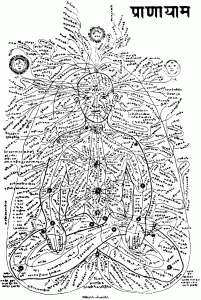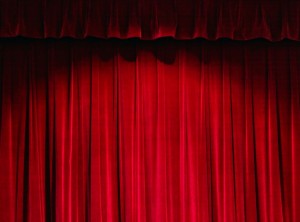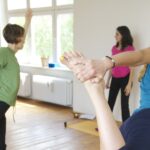
strengthen your ability to concentrate at english yoga berlin
The different parts of the practice of yoga are indeed dynamic. As we discussed in Eight Steps of Classical Yoga Part 1, your yoga practice can adjust to your needs and your experience level. Each part is at your disposal whenever you need to manage your health, deal with some aspect of your daily-life, overcome some limitation, or go deeper in working with yourself. The following are steps 5-8 of a classical yoga practice.
Step 5: Develop a calmer attitude towards your outer and inner environments.
How can we become independent from mental disturbances? How can we learn to achieve a more tolerant outlook towards ourselves and others? How can we learn to accept that which we cannot change? Through Pratyahara, you discover that there are actual things you can do, systematic practices that offer you the possibility to act from your own center, even in adverse conditions. Based on a precise knowledge of how the mind works, these methods teach us to work with the mind, rather than fight it.
Step 6: Learn to return to the relaxed state throughout your daily life.
To be relaxed is not simply to be momentarily free from conscious worry. True relaxation requires something more than just flopping on a sofa and listening to chill-out music. It is a measurable state that has a profound healing and reinvigorating effect. The practice of Yoga Nidra, opens a door into deep states of relaxation that will benefit you long after you do it. And, perhaps more importantly, this guided method trains you to let go of tensions at will, whenever you need to, in the midst of daily activity.
Step 7: Strengthen your ability to concentrate.
Many people have already experienced that concentration is something that can be trained. After you have released tensions and become more calm and clear, concentration will be easier. But yoga also offers specific methods that enable us to strengthen this ability and to become concentrated whenever we need to be. Through the practice of intense concentration (Tratak), you learn that concentration involves no strain or effort, but that it is a relaxed state in which your attention remains easily fixed on an inner or outer object of your choice.
Step 8: Increase your awareness and get closer to yourself.
To be aware and present is to experience life fully. This becomes possible through your work with meditation. There are as many meditation methods as there are temperaments, and they are available for any degree of experience or personal preference. Many traditions use the breath or the body as meditation objects, others employ elaborate rituals to occupy the mind. One meditation technique doesn’t need to exclude another, but can be complementary to it. Through persistent practice, you become conscious of what hinders you, you become more fully yourself.
The only way to truly discover the methods of yoga, and their effects, is through their regular practice. Yoga touches you deeply, but it does so without rush. It follows the natural processes of your body and mind, so that all change is harmonious. By small measures, your practice prompts you to continue to use these methods according to your own situation and the way you live. Our yoga classes in Berlin are taught with the understanding that your exploration should always continue at our own personal pace.


















